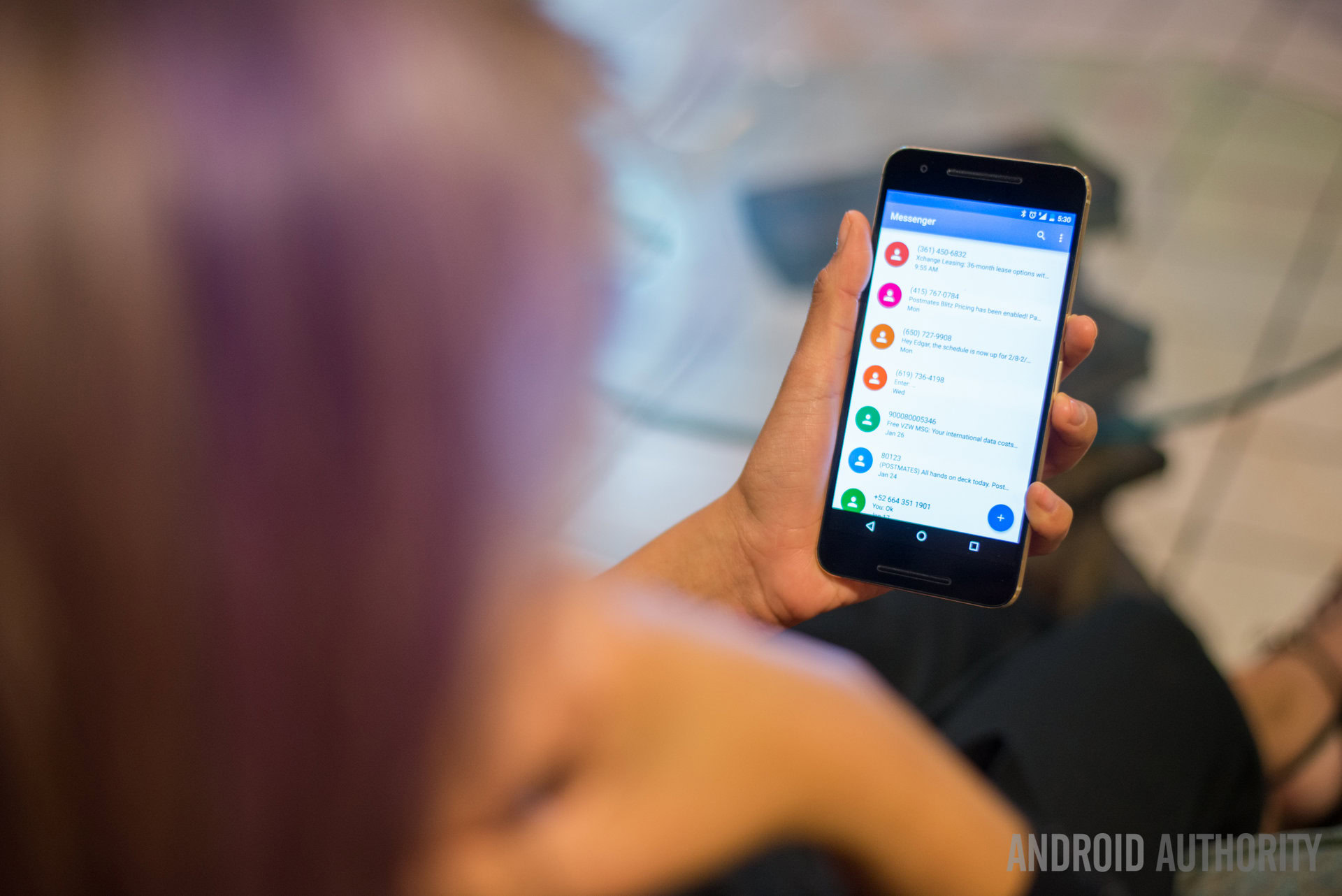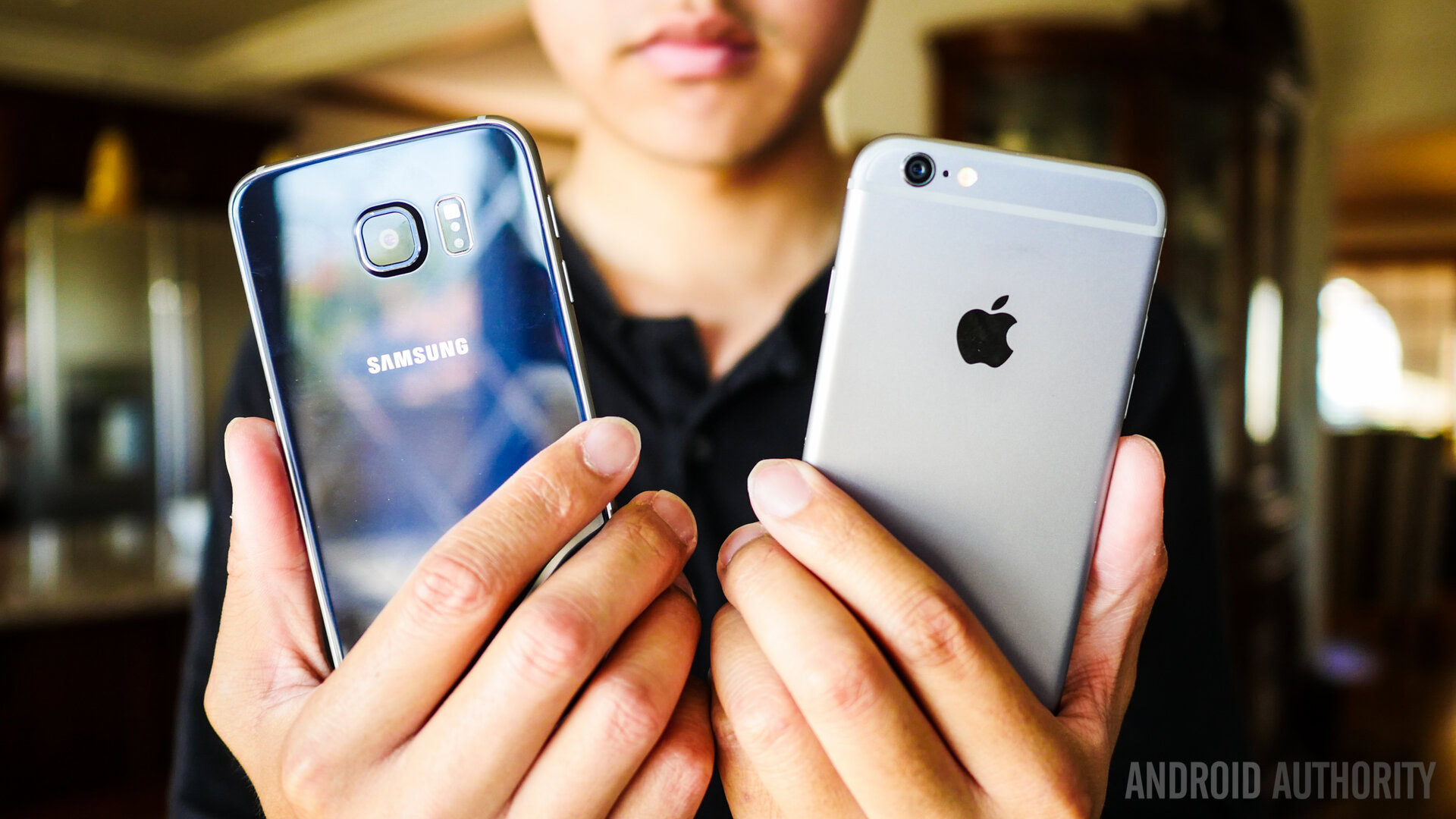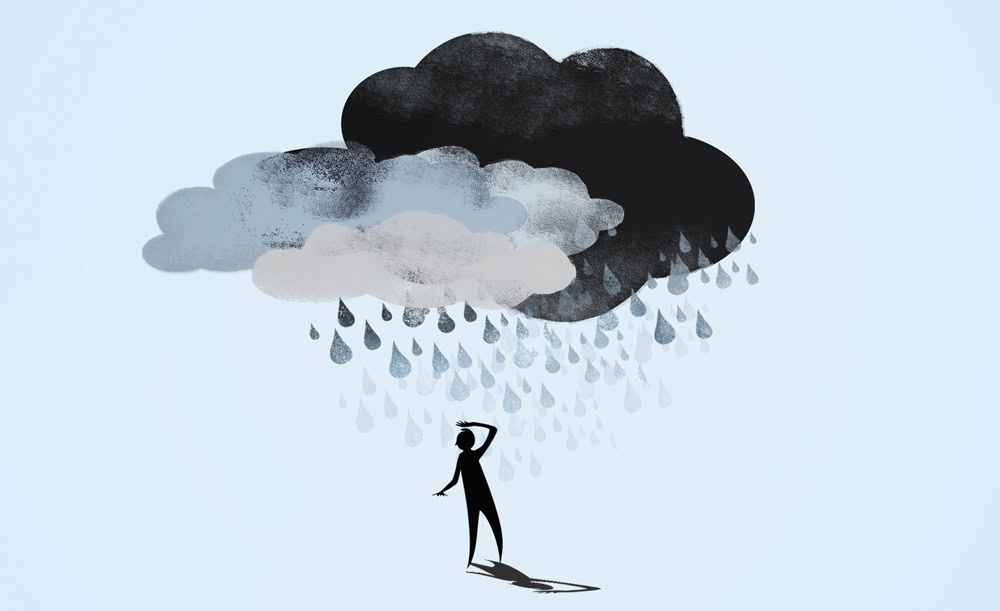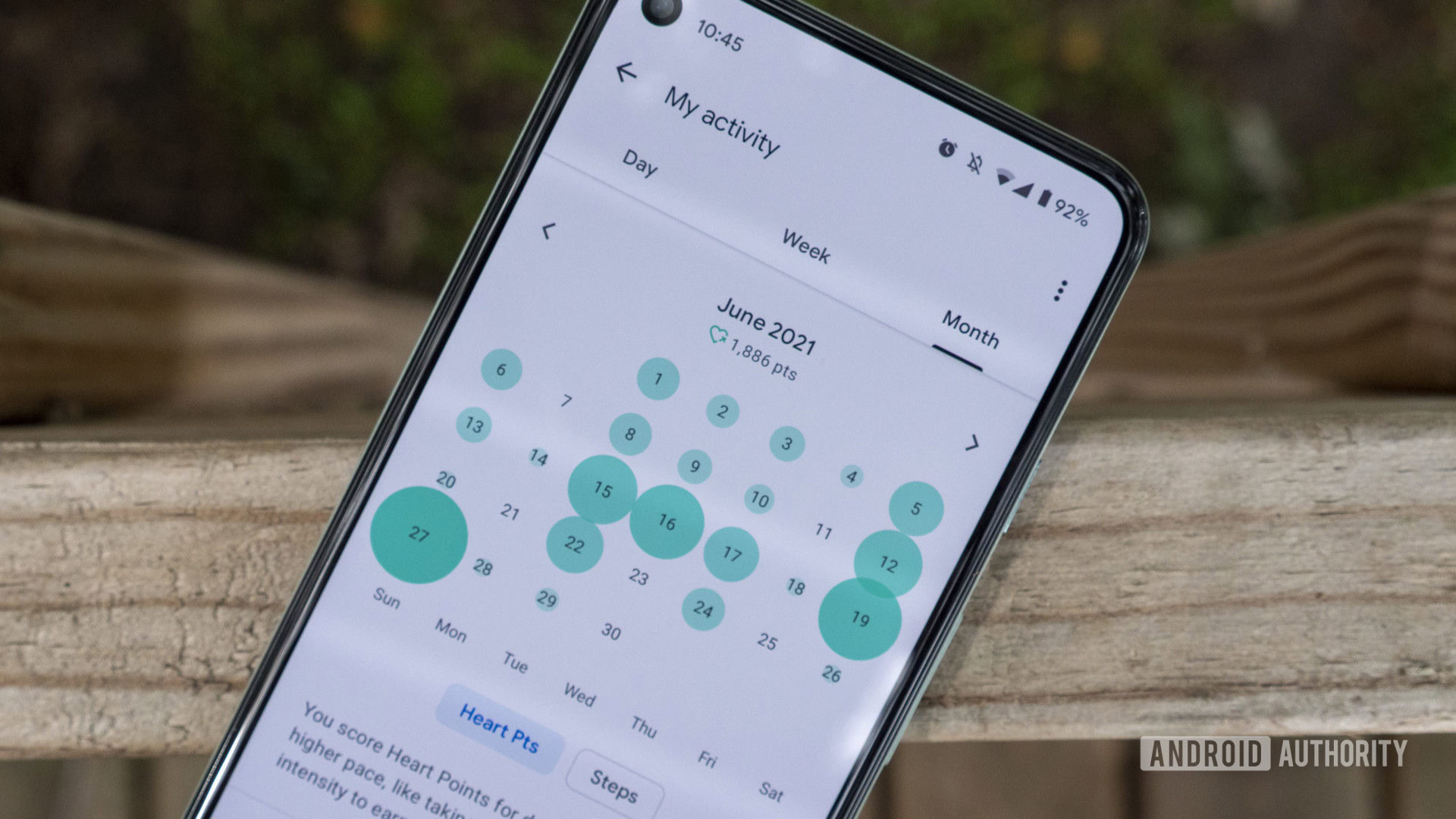Affiliate links on Android Authority may earn us a commission. Learn more.
How to cope with depression in the connected age

Depression affects 300 million people around the globe, but it’s not often talked about due to social stigma. That’s particularly concerning because it can lead to serious mental health issues and even death. As we enter the so-called Fourth Industrial Revolution, dominated by artificial intelligence and even more online-only interactions, technology can be both a blessing and a curse.
Multiple studies have already pointed to a possible link between social media and mental health problems, especially among young adults. But are there ways in which technology can help?
There are apps available to help individuals lead balanced lives. Some can even help people with depression monitor their symptoms and seek professional help.

Note: The author is not a medical doctor, and the lists below are simply a brief overview of some of the possible causes and symptoms of depression and should not be taken as professional advice.
Why are we talking about depression?

Before we get to the role that technology can play in creating and alleviating mental health issues, let’s first go over why we need to talk about mental health issues – depression to be more specific. According to the World Health Organization, 300 million people around the world are affected by it, making it the most prevalent out of any mental disorders, and the number is increasing rapidly. Depression, as you may already know, can lead to suicide, and close to 800,000 people commit suicide every year, a high proportion of which are 15-29-year-olds.
In the United States, studies have found that roughly one in five Americans at some point in their lives will experience clinical depression. The number of people affected by depression is expected to increase by 20 percent each year and almost 80 percent of those affected will not seek any treatment whatsoever. There are a number of reasons for that.
Some may not be able to recognize symptoms and therefore are unaware that they suffer from depression. Many struggle with social stigma and a lack of effective resources. Social stigma often manifests as a negative public perception, as well as cultural and social invalidation of such issues (i.e. people with mental health issues are “just being dramatic”, mental disorders aren’t real diseases, etc.).
Experts agree that various factors can cause depression, including brain chemistry (neurotransmitters), hormones, inherited traits, medications, traumatic events, and substance misuse. The symptoms of depression are just as varied. Below is a short list of what a person with depression might experience:
- Feelings of sadness, hopelessness, helplessness, emptiness, worthlessness
- Easily irritated and frustrated
- Anxiety
- Slowed behavior both physically and mentally
- Loss of interest in daily activities and hobbies
- Loss of appetite
- Lack of energy
- Abnormal sleeping patterns: lack of sleep or too much sleep
- Frequent thoughts of death and suicide
These symptoms could lead to school- and work-related issues, obesity, anorexia, drug and alcohol misuse, self-mutilation, heart disease, stroke, sleep disorders, difficulty in accessing medical insurance, and in worst cases, death.
Due to the widespread nature of depression, using technology to mobilize resources is of increasing importance. Google recently added a new feature to its search engine, which brings up a PHQ-9 test when users in the US search for “depression” or “clinical depression.” The search giant’s effort, in partnership with the National Alliance on Mental Illness, is a step in the right direction but only a small part of what technology can offer.
After all, only 20 to 25 percent of people with mental disorders seek treatment. This is due to a number of reasons like cost, time, physical accessibility, and more. If we look at socioeconomic strata, up to 85 percent of people with severe mental disorders in low- and middle-income countries receive no treatment; In high-income countries, that number sits somewhere between 35 to 50 percent (Rosen, Thayer School of Engineering at Dartmouth College). That’s why apps which help prevent depression, track and log your mood, and help you cope are very important. Not only are they affordable, but they’re much more accessible.
So let’s have a look at some of these apps and how they can help people combat different aspects of depression.
Mood Triggers: Anxiety Sadness
Developed by Nick Jacobson, a doctoral candidate in clinical psychology at Pennsylvania State University, Mood Triggers is a mood tracking app that’s available for free in the Play Store. The app first asks you a few basic questions such as your gender, age, and ethnicity before delving into a more comprehensive list of questions, which ranges from “Have you been bothered by excessive worries during the last six months?” to “In this hypothetical situation, do you feel excessively nervous?”
Once the questionnaire is completed, it will ask you to place your finger on top of the rear-facing camera to measure your heart rate. As the app explains, you will need to do this once every hour for ten hours so that it can accurately plot its data and “help users find what is triggering their anxiety and depression by running statistics.”
Mood Triggers focuses on increasing one's awareness of the causes of their anxiety and depression based on data from their own lives.
“Unlike other anxiety and depression assessment apps which may only log anxiety and depression, Mood Triggers focuses on increasing one’s awareness of the causes of their anxiety and depression based on data from their own lives.” said Jacobson over email.
“This can be very helpful for individuals because what is maintaining anxiety and depression differs markedly from one person to the next, so having this type of personalized feedback can offer insight into what is causing the problem.”
Using the app, it seems to pay attention to possible mood triggers like number of steps, weather, heart rate, hours of sleep, anxiety level, and depression level.
Moodpath

Moodpath is a beautifully-designed app that focuses specifically on self-monitoring and reporting. The main interaction happens inside a chat-style UI, and similar to Mood Triggers, it takes some time until it can give you an assessment of your mental health.
Over the course of fourteen days, you will answer very simple card-based yes-or-no questions on how you feel, accompanied by Material Design-inspired images. It recommends that you complete the questionnaire three times each day – morning, afternoon, and evening.
While the app is very straightforward and visually, the depth and extent of questions seem to be somewhat limited. That said, Moodpath “was developed in close cooperation with the Division of Clinical Psychological Intervention of the Free University of Berlin in Germany” and is in the process of being evaluated for clinical use at a hospital in Germany.
Pacifica
You may have already heard a thing or two about Pacifica, or you might even already have the app. It’s been covered extensively by other online publications and with good reason. Unlike most wellness apps in the Play Store, Pacifica is a freemium product. In order to access all the psychologist-created lessons and library of meditations, you have to pay $5.99 a month or $35.99 a year. The app also requires you to sign in which you can do through a Google+ or Facebook account. If you don’t feel comfortable with that, you can also use a more traditional approach and sign up with an email address. It will first ask you to choose your primary goal, whether it’s improving your mood or feeling less stress in your life.
I was particularly impressed by the library of meditation exercises, which range from one minute to over ten minutes.
From explaining what’s worrying you now, to what kinds of active goals you might want to complete in the future, the majority of the experience revolves around self-reporting and writing down your thoughts. I was particularly impressed by the library of meditation exercises, which range from one minute to over ten minutes. Not only do they offer easy-to-follow directions with calming sound effects, but you can also personalize each exercise to fit your exact needs. Another feature that makes Pacifica stand out is its online community. The discussions that take place there could serve as a reminder that you are not alone in fighting mental disorders but also provide important insight into how other people are coping with them.
Overall, Pacifica is more of an anxiety management and wellness promotion app than a depression diagnosis app. If your goal is to track mood swings and triggers and signs of depression, Pacifica probably isn’t the best app out there. That said, it offers an unparalleled number of resources in helping you live a balanced life.
What’s Up? – Mental Health App

What’s Up? is arguably offers the most mental health-related information. The app starts with basic statistics that illustrate the prevalence of mental disorders, and similar to Pacifica, What’s Up? is more of a digital diary embedded with wellness resources than a diagnostic app focused on depression specifically.
Similar to Pacifica, What’s Up? is more of a digital diary embedded with wellness resources than a diagnostic app focused on depression specifically.
It offers an extensive list of ways that could help you cope with negative thoughts, anxiety, stress, and depression. There are inspirational quotes, metaphors, methods to overcome negative thinking, breathing techniques, and online-based forums among others, which utilize Cognitive Behavioural Therapy and Acceptance Commitment Therapy methods.
It’s worth pointing out that most of these features are very word-centric, and it can be a little discouraging when every page is filled with written instructions with no visuals.
Talkspace
Talkspace, unlike the apps above, offers on-demand access to “thoroughly reviewed and verified” therapists, offering a glimpse of what telemedicine could do for us.
Whether it’s stress or depression, you can request to be matched with one of the 1,000+ therapists, after which you can send private and anonymous messages anytime and anywhere via your phone to receive professional advice.
The app itself seems a little buggy, and multiple users have complained that their messages not going through properly. The service requires weekly payments, starting at $32. The basic plan does not offer much, however. Realistically, spending between $50 and $100 a week is required to get adequate service. Again, when we consider socioeconomic factors and insurance-related issues, Talkspace is certainly not going to be an accessible option for everyone. For those of you who are financially able, it might prove to be a valuable resource.
Other things to consider
Depression is, unfortunately, becoming more and more prevalent, especially among younger people. Students – especially those who are marginalized by gender, sexuality, and ability, among others – are particularly susceptible. Some studies indicate that as many as one in four young adults suffer from depression (Rosen).
While therapy and medication certainly help, sleep and exercise play an indispensable role in preventing and improving mental health issues. In fact, if everyone slept well and exercised regularly, for more than 15 minutes several times a week (a luxury for some), it would reduce the number of people affected by mental health issues by 25 percent (Rosen).

According to Nick Jacobson, the most important takeaway for everyone – those who are suffering from mental disorders and those who are not – should be the importance of discussion.
“Increasing awareness of the prevalence of depression (and other mental health problems) is a major effort undertaken early on in most treatments for depression,” said Jacobson.
“This helps to normalize depression and give clients the sense that they aren’t alone in suffering. Similarly, discussing the prevalence of depression and some aspects of depression can help to increase knowledge and hopefully decrease social stigma.”
Technology – mental health apps and telemedicine – could help further dispel preconceived notions against mental disorders and provide an important, easily accessible platform.
Not too long ago, people with mental disorders were placed into “madhouses,” devoid of human contact and fundamental dignity. While there has been incredible progress since the 19th century, there is still much work to be done. Technology – mental health apps and telemedicine – could help further dispel preconceived notions against mental disorders and provide an important, easily accessible platform on which people can find remedial resources and in some cases, professional help.